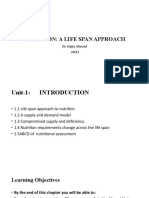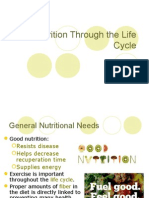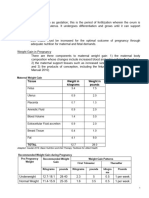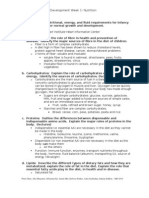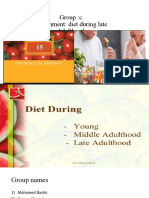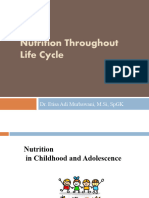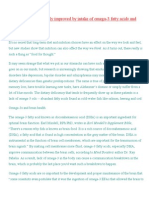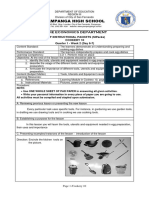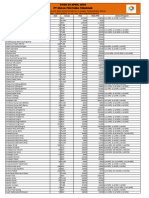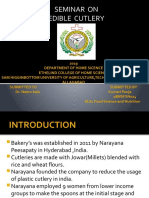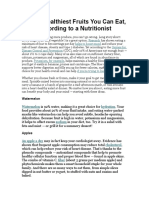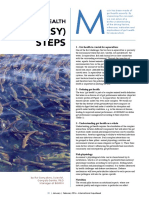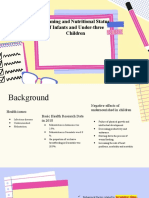University of People
Assignment Activity Unit 7
Oluwaseun Akinmoladun (Instructor)
1. Explain developmental milestones and how nutritional requirements change through
infancy and toddler years.
Developmental Milestones and Nutritional Requirements in Infancy and Toddlerhood
Infancy and toddlerhood are crucial stages of development, marked by rapid growth and significant
changes in nutritional needs. Understanding these milestones and adapting nutritional requirements
accordingly is essential for promoting healthy development.
Infancy (Birth to 12 months)
Physical Development
Rapid growth in height and weight (Hockenberry & Wilson, 2019)
Development of fine and gross motor skills (Hockenberry & Wilson, 2019)
Nutritional Requirements
Breast milk or formula as the primary source of nutrition (American Academy of Pediatrics,
2012)
Introduction of solid foods around 6 months of age (American Academy of Pediatrics, 2012)
Increased need for iron, zinc, and vitamin D (Hockenberry & Wilson, 2019)
Toddlerhood (12 to 36 months)
Physical Development
Continued growth in height and weight (Hockenberry & Wilson, 2019)
Refinement of motor skills and increased physical activity (Hockenberry & Wilson, 2019)
Nutritional Requirements
Transition from breast milk or formula to a balanced diet (American Academy of Pediatrics,
2012)
Increased need for protein, calcium, and vitamin C (Hockenberry & Wilson, 2019)
Importance of establishing healthy eating habits (American Academy of Pediatrics, 2012)
�Conclusion
Monitoring developmental milestones and adapting nutritional requirements accordingly is crucial for
promoting healthy growth and development in infants and toddlers. Healthcare professionals and
caregivers should work together to ensure that children receive the necessary nutrients to support their
physical, cognitive, and social-emotional development during these critical stages.
2. Provide a concise overview of the digestive system in young adults.
The Digestive System in Young Adults
The digestive system is a complex network of organs and processes responsible for breaking down food,
extracting nutrients, and eliminating waste. In young adults, the digestive system undergoes various
changes and functions to support overall health and well-being.
Anatomy and Physiology
Gastrointestinal Tract
Mouth, esophagus, stomach, small intestine, large intestine, rectum, and anus (Tortora &
Derrickson, 2018)
Responsible for the mechanical and chemical breakdown of food
Accessory Organs
Liver, pancreas, and gallbladder (Tortora & Derrickson, 2018)
Produce enzymes, hormones, and bile to aid in digestion
Digestive Processes
Ingestion, deglutition, gastric digestion, intestinal digestion, absorption, and elimination (Tortora
& Derrickson, 2018)
Facilitated by muscular contractions, enzyme secretion, and nutrient absorption
Nutritional Considerations
Macronutrients
Carbohydrates, proteins, and fats (Mahan & Raymond, 2017)
Provide energy and support various bodily functions
Micronutrients
Vitamins and minerals (Mahan & Raymond, 2017)
Necessary for growth, development, and maintenance of overall health
Dietary Recommendations
Balanced diet with a variety of nutrient-dense foods (Mahan & Raymond, 2017)
� Importance of hydration and regular physical activity
Common Digestive Concerns
Gastrointestinal Disorders
Irritable bowel syndrome, gastroesophageal reflux disease, and inflammatory bowel disease
(Tortora & Derrickson, 2018)
Importance of seeking medical attention for persistent or severe symptoms
Lifestyle Factors
Stress, poor dietary habits, and sedentary behavior (Tortora & Derrickson, 2018)
Potential impact on digestive function and overall well-being
In conclusion, the digestive system in young adults plays a crucial role in maintaining overall health and
well-being. Understanding the anatomy, physiology, and nutritional considerations of the digestive
system can help young adults make informed choices to support their digestive health and prevent
common digestive concerns.
3. Differentiate anorexia in adults from anorexia of aging prevalent in older adults. Examine
the link between longevity and early-life nutrition and physical habits.
Anorexia in Adults vs. Anorexia of Aging
Definition and Prevalence
Anorexia in Adults
Characterized by a significant decrease in appetite and food intake, often accompanied by a
distorted body image and a fear of gaining weight (Hockenberry & Wilson, 2019)
Typically affects young adults, particularly women, and is often associated with eating disorders
such as bulimia nervosa and binge eating disorder (Hockenberry & Wilson, 2019)
Anorexia of Aging
Defined as a loss of appetite and/or decreased food intake in older adults, often due to age-related
changes in physiological processes and comorbidities (Marzetti et al., 2016)
Prevalent in older adults, particularly those living in long-term institutions, hospitalized, or
suffering from neurological disorders and/or inflammatory conditions (Marzetti et al., 2016)
�Causes and Risk Factors
Anorexia in Adults
Often linked to sociocultural and psychological factors, such as societal pressure to be thin, low
self-esteem, and a history of trauma (Hockenberry & Wilson, 2019)
May be exacerbated by the use of diet pills, laxatives, or other weight loss aids (Hockenberry &
Wilson, 2019)
Anorexia of Aging
Multifactorial etiology encompassing age-associated changes in peripheral and central
physiological processes, as well as the co-occurrence of pathological conditions (Marzetti et al.,
2016)
Factors such as declines in sight, smell, and taste, poor oral health, socioeconomic factors, and
psychological factors like depression contribute to the development of anorexia of aging
(Marzetti et al., 2016)
Link Between Longevity and Early-Life Nutrition and Physical Habits
Early-Life Nutrition
Nutritional intake during early life, particularly in the first two years, plays a crucial role in
determining long-term health and longevity (Koletzko et al., 2014)
Adequate nutrition during this period supports optimal growth and development, which can
positively impact overall health and longevity (Koletzko et al., 2014)
Early-Life Physical Habits
Physical activity and exercise during early life have been linked to increased longevity and
overall health (Hillman et al., 2016)
Regular physical activity during childhood and adolescence can help establish healthy habits and
reduce the risk of chronic diseases later in life (Hillman et al., 2016)
Conclusion
In conclusion, anorexia in adults and anorexia of aging are distinct conditions with different causes and
risk factors. While anorexia in adults is often linked to sociocultural and psychological factors, anorexia
of aging is a multifactorial condition influenced by age-related changes and comorbidities. The link
between early-life nutrition and physical habits and longevity highlights the importance of establishing
healthy habits during early life to support overall health and longevity.
REFERENCES:
1. American Academy of Pediatrics. (2012). Nutrition: What every parent needs to know. American
Academy of Pediatrics.
2. Tortora, G. J., & Derrickson, B. (2018). Principles of anatomy and physiology (15th ed.). Wiley.


